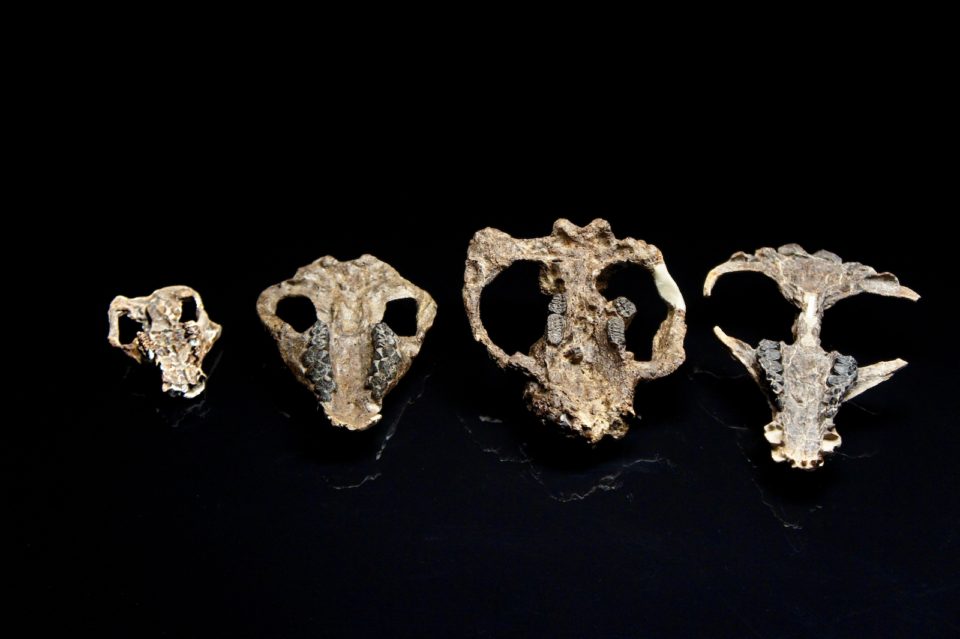Ken Ham is still a Young Earth creationist, regardless that he think evolution took place post-Flood, because he still believe in Genesis 1 & 2 creation myths.
The name Ken Ham suites him, because he is a sham and a con-artist.
Welcome to Religious Forums, a friendly forum to discuss all religions in a friendly surrounding.
Your voice is missing! You will need to register to get access to the following site features:We hope to see you as a part of our community soon!
Ken Ham is still a Young Earth creationist, regardless that he think evolution took place post-Flood, because he still believe in Genesis 1 & 2 creation myths.
Yes, he is.The name Ken Ham suites him, because he is a sham and a con-artist.
Not exactly a missing link but it fits the gist of the OP as it provides a missing explanation for the question why DNA and proteins are right handed:

That’s Abiogenesis.
Not evidence per se, but of the untold numbers of chemical reactions that can and have taken place over 5 billion years, who knows all the outcomes that could have emerged.Exactly. The reason for the question.
Evolution does not provide evidence for chemistry evolving into biology. There is no explanation needed for that.
Not evidence per se, but of the untold numbers of chemical reactions that can and have taken place over 5 billion years, who knows all the outcomes that could have emerged.
Exactly. The reason for the question.
Evolution does not provide evidence for chemistry evolving into biology. There is no explanation needed for that.
I was just using the rough age of the Earth as a starting point to include non-organic evolution.First it is not a matter 5 billion years taken place over 5 billion years as per abiogenesis. It is only the time span abiogenesis took place and life formed when the environment was right between about 3.7 to 4;2 billions of years
All it would hypothetically take is just 1 time, and the potential of the evolution/merging of amino acids to form basic protein is seemingly at the least possible.As far as evolution goes once life formed and evolve there are limited ways the geometry of organic life, environment can evolve. Of course, naturally not all the possibilities result in the evolution of life we see happened, but there are not a lot of possible alternatives.
How much education have you had to understand the environment, and organic chemistry behind life do you have?
There is a vast amount of research and discoveries related to the development of the hypothesis of abiogenesis. How much have you read concerning these scientific articles to understand abiogenesis?
. . . or are you just making assertions based on a religious agenda?
Not evidence per se, but of the untold numbers of chemical reactions that can and have taken place over 5 billion years, who knows all the outcomes that could have emerged.
Yep. "Who knows" as you said!
Thanks for caring about my education. But its irrelevant, and is not at all necessary to make an irrelevant strawman you are trying to construct with such a basic episode.
Very, very relevant. Your making statements and assertions not supported by scientific evidence is directly relevant to the argument, and not a Straw man. Look up the definition. The lack of education on your part, and the lack of scientific references leaves you with only a religious agenda to justify your assertions.
Incomplete response to justify your agenda. The possible outcomes are still limited by natural laws and the environment. 'It is not anything goes.'
Anything outside the narrow limits of natural outcomes.Who said "anything goes"?
Whats the "statements and assertions not supported by scientific evidence" that I made? Please explain.
Evolution does not provide evidence for chemistry evolving into biology. There is no explanation needed for that.
Anything outside the narrow limits of natural outcomes.
The following is an example. More may follow . . .
